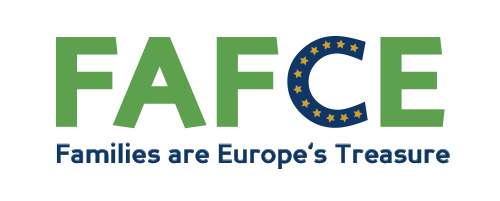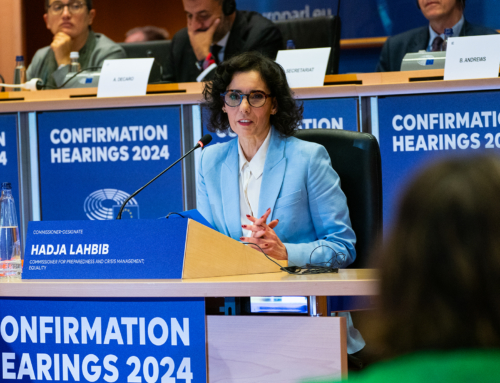Brussels, 10 March 2021
Europe faces a clear pattern of decreasing birth rates over the past decades. In 2018, the average number of childbirths in the EU was 1.55 per woman. It is, as stated by the European Commission on its Report on the Impact of Demographic Change (published on 17 June 2020), “below the value of 2.1 considered to be the level required to keep the population size constant in the absence of migration. Almost no region in Europe has a rate at this level, with some regions registering a rate of less than 1.25.”[1] The lowest fertility rates were recorded in Malta (1.23), Spain (1.26) and Italy (1.29). Meanwhile, France reported the highest European fertility rate (1.88), followed by Sweden and Romania (both 1.76).[2]
In a reflexion paper jointly published last November with COMECE on “The elderly and the future of Europe“, FAFCE reiterated its call to acknowledge the demographic unbalance in Europe and to invest in the family to tackle the ageing of Europe. It had already been a key demand of the Federation to European decision-makers in a 2018 Board Resolution For a Demographic Spring, and more recently in a 2019 Board Resolution on a Call for a European Natality Pact.
On 7 February 2021, Italy’s Day for Life, Pope Francis mentioned this all-time low in births in Italy, with 440,000 newborns, about 20,000 fewer than the previous year, and voiced his particular concern for the Italian demographic winter.[3] However, Italy is not an isolated example. Even France, which used to be the natality champion of Europe, saw its sixth consecutive year of declining fertility[4] in 2019, and a drop in births of 13% in 2020.[5]
A question then arises: do Europeans want fewer and fewer children?
A study conducted by the French family association UNAF revealed that, on average, families’ desired number of children is 2.39. It is worth highlighting that this number is above the replacement rate.[6] Families in France would thus like to have, on average, at least one more child. If they do not have more children, it is not because they want to, but rather because they cannot.
One usually tends to explain the number of children as a personal choice. Yet, in the face of the gap between the number of desired children and the number of born children, other elements of explanation must be included. If parents do not have as much children as they wish, it logically implies that there are obstacles that constrain them.
Those obstacles are first economic: weak financial support to families, an unfair taxation system, high housing and education costs. They are also social: having children negatively impacts one’s career in a current context of limited access to parental leave, to flexible arrangements and to childcare services, and in a latent background of maternal mobbing. But, above all, these obstacles are cultural: people are socially only recognised as individuals, or as workers, rather than persons part of a community of social connections. Their success is evaluated in terms of career success and financial achievement rather than happiness and family life.
Although the demographic change in Europe can partially be explained by a natural demographic transition, it is also influenced by a general economic, social and cultural framework that constrains persons in a more or less visible manner to reduce their family life aspirations.
In the perspective of the Conference on the Future of Europe, it is crucial to grant couples the freedom to have the number of children they want – not less and not more. Needless to say, parents also need to be supported after childbirth through family-friendly policies, in recognition of the responsibility they chose to endorse. It is key for the economic, social and cultural future of Europe.
[1] Report on the Impact of Demographic change, European Commission, 17 June 2020. Available at https://ec.europa.eu/info/sites/info/files/demography_report_2020_n.pdf
[2] Fertility statistics, Eurostat, May 2020. Available at
[3] “Pope on Day for Life: Demographic winter threatens Italy’s future”, Vatican News, 7 February 2021. Available at
[4] Bilan démographique 2020, INSEE, 19 January 2021. Available at https://www.insee.fr/fr/statistiques/5012724
[5] Démographie – Nombre de naissances vivantes – France (inclus Mayotte à partir de 2014), INSEE, 25 February 2021. Available at
https://www.insee.fr/fr/statistiques/serie/001641601#Tableau
[6] “Bilan démographique 2020 : Une étude inédite montre un fort désir d’enfant alors que la fécondité continue sa chute”, UNAF, 14 January 2021. Available at







